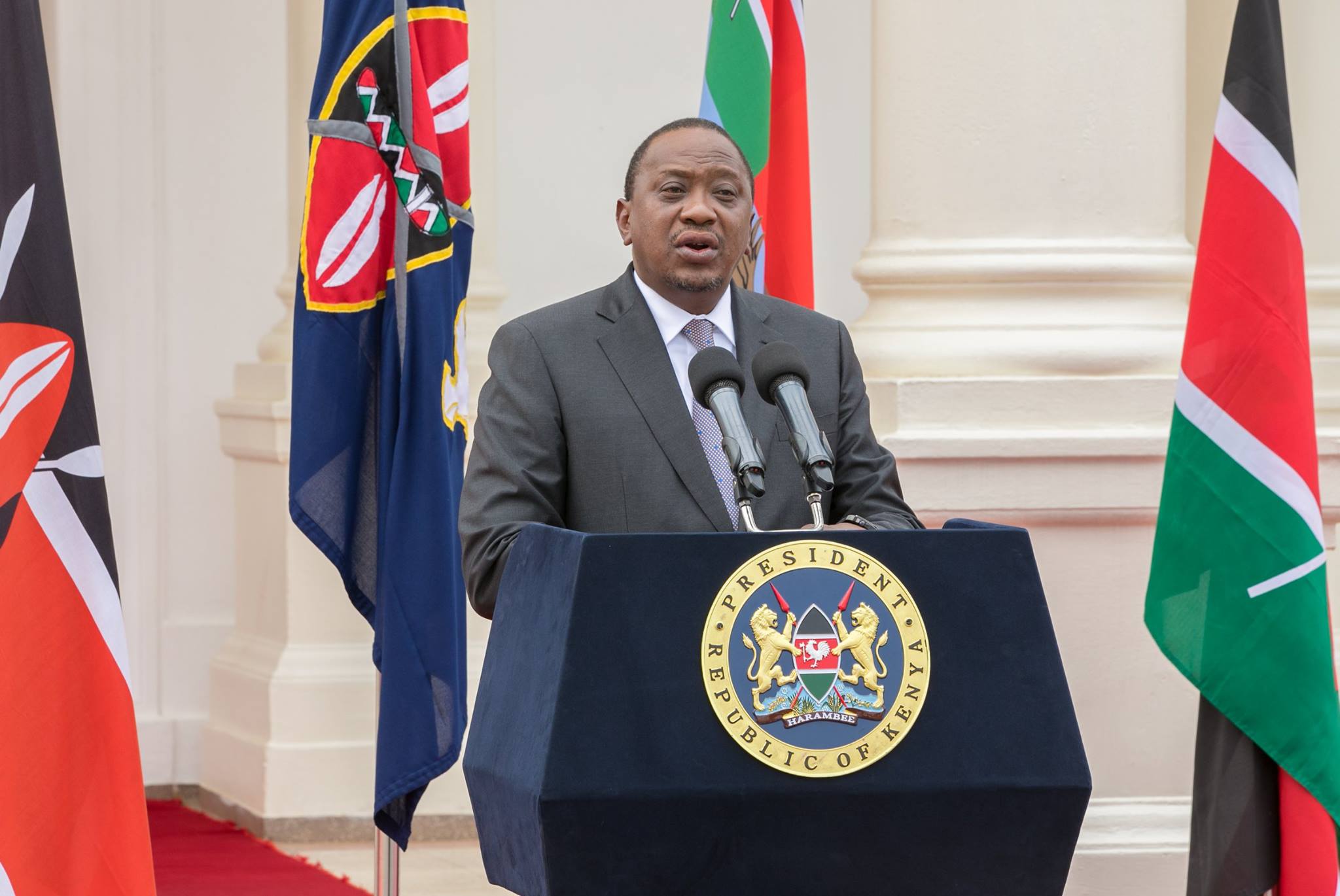President Kenyatta has ambitious plans in his last term and is banking on the private sector to safeguard his legacy
President Uhuru Kenyatta officially rolled out his plans that will drive his economic agenda his last term in office. The plan, which he first highlighted during last year’s Jamuhuri Day Celebration, outlined four key pillars (Big Four) that would eventually see his government create over a million jobs. The ‘Big Four’ sectors in his plan as outlined in the Kenya 2018 Budget Policy Statement (BPS), include manufacturing, food security, Healthcare and Housing.
The government seeks to increase the share of manufacturing sector, expand universal healthcare, deliver at least five hundred thousand affordable housing units and finally ensuring Kenyans enjoy food security and nutrition by the year 2022.
The government already, has identified a number of projects in the sectors that will catalyze the realization of these goals. But, with over half of the country’s revenue going to recurrent expenditure, president Kenyatta and his government is facing a challenge of where to source for finance.
The government is already seeking ways to acquire finance and has pointed out that it will rely on the private sector to realize its agenda. “We are aware that we are financially stretched in the fiscal space. We need partnership with the private sector so that they can take advantage of the good foundations set up to deliver to Kenyans,” said President Kenyatta at a presser in Nairobi.
The BPS cites public-private partnership projects that will be undertaken during the 2018-2020 period such as a second Nyali bridge, Lamu coal plant, Lamu port (3 berths), Lamu-Garissa-Isiolo highway, airport rehabilitation car parks, conference centers, affordable housing projects, and even a Likoni crossing aerial cable car.
In the housing sector, the government is looking at raising low-cost funds from the public and private sectors to construct half a million houses. This the government hopes will create 350,000 jobs and raise Reals Estate and Construction sector’s contribution to the GDP to 14 per cent.
“The government will also transform the Strategic Food Reserve (SFR) targeting 500,000 bags in 2018, two seed potato stores in Nyandarua and Molo and one potato ware store in Nyandarua, three fish storage in Migori and rehabilitation of three landing sites in Migori, Homa Bay and Busia.”
To further attract more investment and partnerships, the government plans to reduce corporate tax for developers constructing at least 400 units per annum. In addition the government plans to establish National Social Housing Development Fund and create the Kenya Homes Refinance Company to provide funds and issue bonds in the local capital market.
Agriculture
In agriculture and manufacturing, the government is hoping to rejuvenate the cotton production by using hybrids that produce better yields as well as offering incentives to investors to set up manufacturing plants. From this the government seeks to create 60,000 jobs in the sector and increase exports by USD200 million by the year 2022.
According to the policy statement, about 50,000 women and youths will be involved in this sector and will be trained. “This will increase revenue from textile industry from USD34.7 million to USD19 billion, create 500,000 cotton jobs and 100,000 new clothes jobs by 2022,” says the paper.
In the leather sector, the aim is to create, at least 5,000 direct new jobs as well as increase USD70 million this year. Priorities for the government is setting up training and setting up 5,000 cottage industries stopping leather imports and identifying three new parks.
Food security
In improving food security and nutrition the government aims to attract one fish feed mill investor and two processors for marine and fresh water fish processing. The aim is to increase fish yields from 2,500 to 18,000 metric tons annually by 2022. Further through PPP, the government aims to harvest 6 million bags of maize in 2017. The goal is to reduce post-harvest loses from 20 to 15 per cent. Investors should also look out for incentives on cereal drying equipment silos fishing and aquaculture among others.
The government also targets to produce 2.76 million bags of maize, potato, rice and feeds in 52,000 acres by the end of this year. In addition 70,000 acres is targeted under public-private partnership for the listed crops, cotton, and aquaculture and feeds production.
Health
The government is also seeking to increase the number of people with health coverage to 51 million by the year 2022 from the current 16.53million.
ICT
In ICT, the government will be seeking partnerships in the setting up of Business Process Outsourcing centers that will create at least 1000 jobs in 2017. The government will also be seeking partnership in setting up an electronics assembly plant.

